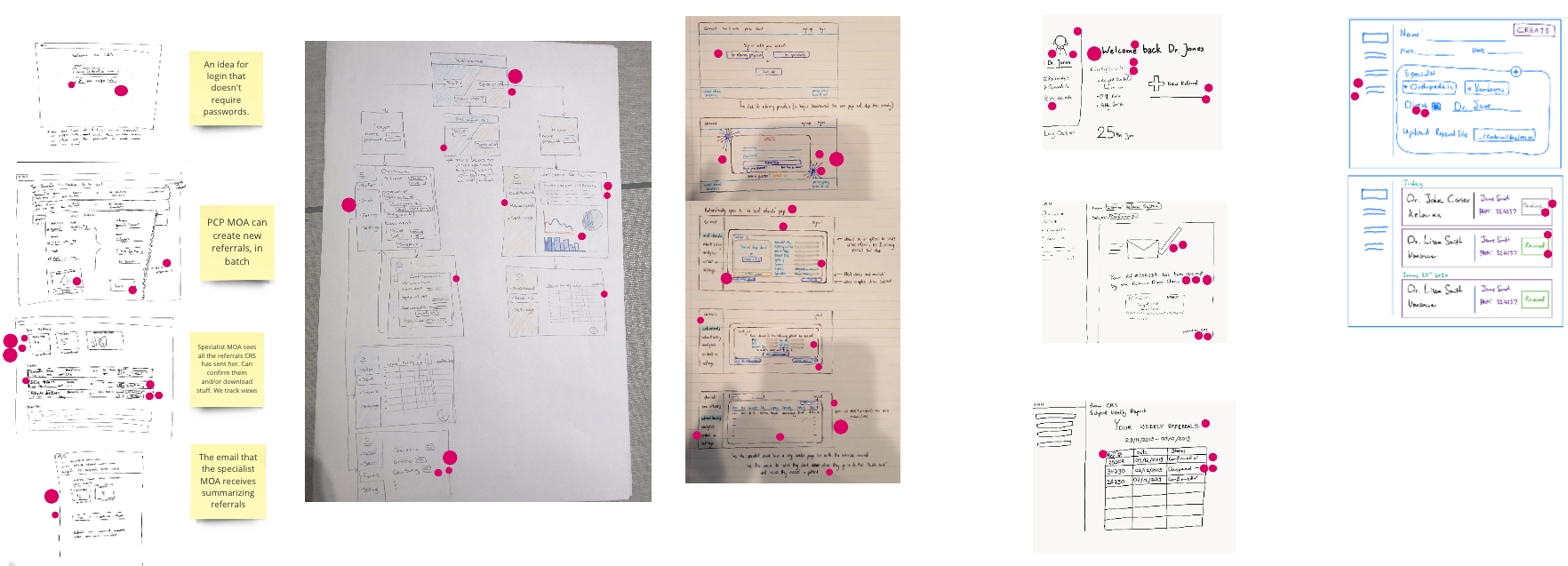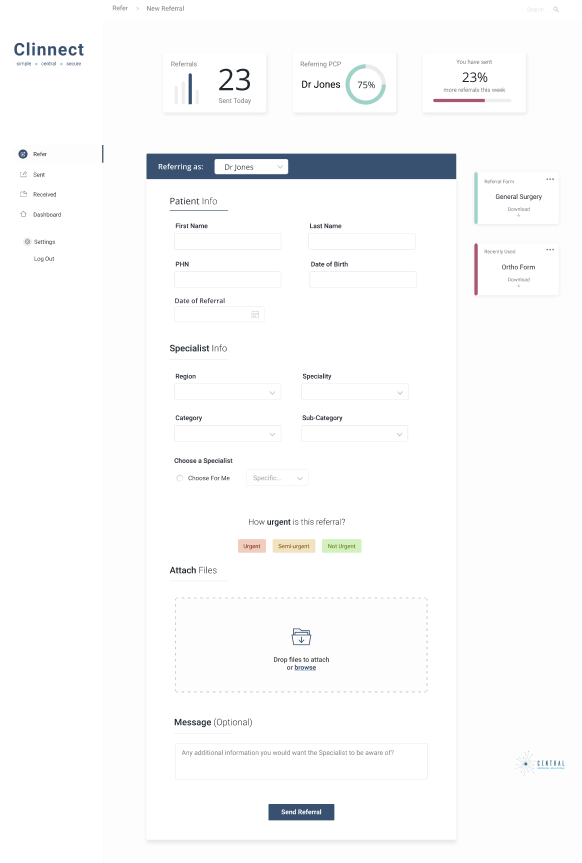Sprinting From An Idea to a Product Design in a Few Days
August 25, 2020

We've been building software for clients for a long time and one of the most effective tools we've discovered for rapidly iterating ideas is the remote design sprint. The process allows us to quickly download a large amount of information from our client's heads into our own, while setting the foundation for the designs of the software interface.
As a remote first team we've grown accustomed to thinking about meetings and processes in a different way. Asking "How can we use the fact that we work digitally to enhance our collaboration?" and "What's possible because we are remote—not in spite of it?"
What the heck is a design sprint?
Just like a sprint, it's quick and high intensity. Instead of running, we design! It mashes together some ideas from agile product development and design thinking. The design process is condensed into a short time window - just a few days compared to months for a traditional design project. It's a fun, messy, and productive process that yields incredible results. In just a few short, but intense, days we can go from a simple idea to a fully fleshed out design sketch.
The design sprint Two Story Robot offers is set up to be three mornings of fast paced and structured activities. We follow a script that leads us through different exercises— some of which are meant to get the creative juices flowing and then some are focused on product development.
The sprint is generally led by a product expert. For example, if you're not technical but have an idea for a software product, the expert can help with the technical aspects.
Sometimes, this type of exercise would take place in a room where everyone is locked in until you come out with an idea, but Two Story Robot runs the process completely remotely. The process forces a very short time window and it's a really good way to get information exchange happening back and forth.
The output of this entire process is a collaborative design that highlights a visual concept and priorities. At the end there's a design we can start implementing and iterating on which is really cool.
We completed a design sprint earlier this year with a client in the digital health space. From this design sprint emerged the basis for a new product, Clinnect, a centralized referral system to securely transmit patient data from a physician to a specialist. This is a lived example of what that experience was like from both the client's and our team's perspectives.
We've released a podcast episode on the Fixing Faxes podcast talking about this experience. Have a listen.
A design sprint in action: Clinnect
"When we started this process with Clinnect what we had was an idea. We knew what features we wanted to add in and a few sketches on paper, but no idea what the product would look like," said Angela Hapke, co-founder & CEO, Central Referral Solutions.
"From where we were when we started on a Monday morning to where we got by the end of day Wednesday was mind blowing. The amount of work we were able to push out in the sprint and get our heads around was unreal—this was a super high-value experience from our perspective."
Some clients are a little hesitant about the process being entirely virtual at first, but after getting into it understand why the process is presented virtually.
The process itself consists of a number of steps and can easily be adapted to fit the specific context and problem. The general flow consists of expert interviews, goal identification, client journey mapping, research, concept sketching and user storyboards.
The customer journey is one of the most valuable things we do in a design sprint. It aligns our team of product builders with the pains of the customer. It shows us the process and what a customer expects and experiences.

A rough customer journey describing the interactions that Clinnect would have with a customer. It's a series of sticky notes with connected arrows showing a branching path and all the stages that the customer goes through while trying to do their job.

A collection of sketches, drawn by hand, by everyone in the design sprint. Software developers, designers, and the client all contribute their ideas of how they would solve the problems we focus on from the customer journey.
Tangible product framework in a few days
Angela said they "started with a cute and nice idea" at the beginning of the design sprint and ended up with something tangible.
Many clients are surprised at how much value comes out at the end and how much of the design you end up with is a tangible outcome than can immediately be iterated on or developed.
The designs are pretty rough, like really good bones on a skeleton, but then w can take that and start adding all the flesh to it.
Through a series of creative exercises we draw interfaces. Each participant creates a few screens that serve as an example of a particular part of the customer journey. For Clinnect, the screens showed how a health care professional might compose and send a referral and what the screens could look like for a specialist who needs to change some aspect of a referral they received.
At the end of it all we take all the rough sketches and our understanding of the problem and create design mockups. These serve as a guide for our development team to build the software. In many cases we can start building these screens right away and have a functioning small product relatively quickly.

A completed design mockup showing how a physician might enter information about a patient to be sent to a specialist for a referral.
The perks of ruthless prioritization
The biggest perk of the design sprint process is ruthless prioritization of what needs to get done. The entire goal is to remove the ability to second guess, get distracted, overthink and procrastinate.
In a design sprint, each phase is time bound and then you move on. There's no time to be unfocused and indecisive. It can be a little uncomfortable at first, especially to those who like to have control over how things are going and know what to expect in advance, but once you let go of that and lean in then creativity can flow.
For Central Referral Solutions, the design sprint process also produced fuel, inspiration and motivation to keep going with the rest of the work that followed.
If you have a problem, we'll solve it
Throw everything you know about meetings and brainstorming out the window. If you have an idea for a product or a problem to solve with a software solution, but aren't sure what exactly the solution needs to look like, we can help you.
Stop spiraling in search of an answer and jump into a process that reliably produces exceptional results. A design sprint with Two Story Robot will get you there.
Reach out to us at info@twostoryrobot.com.